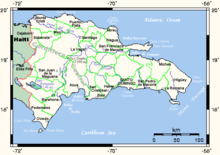
La Altagracia is the easternmost province of the Dominican Republic. Punta Cana is located on the eastern shores of this province. The province was part of the old La Altagracia Province, which split into two, La Altagracia Province and La Romana Province, on February 27, 1961.
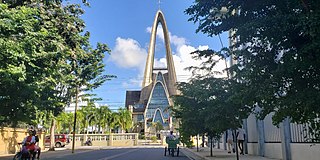
Higüey, or in full Salvaleón de Higüey, is the capital city of the eastern La Altagracia Province, in the Dominican Republic, and the eighth largest city of that country. The Yuma River flows through the urban areas of Higüey.
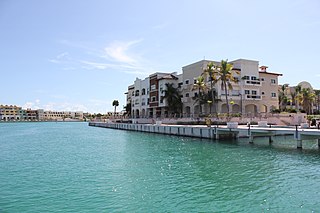
Punta Cana is a resort town in the easternmost region of the Dominican Republic. It was politically incorporated as the "Verón–Punta Cana township" in 2006, and it is subject to the municipality of Higüey. According to the 2022 census, this township or district had a population of 138,919 inhabitants.

Punta Cana International Airport is a privately owned commercial airport in Punta Cana, eastern Dominican Republic. The airport was built with open-air terminals and roofs covered in palm fronds. Grupo Punta Cana built the airport, which was designed by architect Oscar Imbert, and inaugurated it in December 1983. It is owned by Grupo Punta Cana and became the first privately owned international airport in the world.

El Salvador is a predominantly Christian country, with adherents Islam being a minuscule minority. Due to the secular nature of the country's constitution, Muslims are free to proselytize and build places of worship in the country.
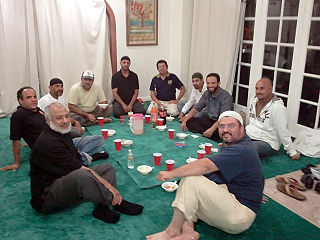
Mexico is a predominantly Christian country, with adherents of Islam representing a small minority. Due to the secular nature of the state established by Mexico's constitution, Muslims are free to proselytize and build places of worship in the country. The country has a population of around 126 million as of 2020 census and according to the Pew Research Center, the Muslim population was 60,000 in 1980, 111,000 in 2010, and is predicted to be 126,000 in 2030; however, according to the 2010 National Institute of Statistics and Geography (INEGI) census, there were only 2,500 individuals who identified Islam as their religion. Most Muslims are foreign nationals and the majority are Sunni.

Panama is a predominantly Christian country, with Islam being a minority religion. Due to the secular nature of Panama's constitution, Muslims are free to proselytize and build places of worship in the country.

Islam in Haiti consists of a small minority of Muslims forming less than 1% of the total population, composed of locals and foreign immigrants. A number of mosques and Islamic organizations are present in the country.

Chile is a predominantly Christian country, with adherents of Islam being a minuscule minority. Due to the secular nature of Chile's constitution, Muslims are free to proselytize and build places of worship in the country. The statistics for Islam in Chile estimate a total Muslim population of approximately 5,000, representing less than 0.02% of the population. There are a number of Islamic organizations in Chile, including the Muslim Society of Chile and As-Salam Mosque in Santiago, Bilal Mosque in Iquique, the Mohammed VI Cultural Center in Coquimbo, and Islamic Foundation of Chile in Santiago.

Bavaro is an area of Punta Cana, located in La Altagracia province, the easternmost province of the Dominican Republic. Bavaro was originally developed as a town for resort workers together with the resort area and tourist region of Punta Cana. As hotels started to rise along the east coast, north from Punta Cana, Bavaro itself became a center of services.
Miches is a town located in El Seibo province in the northeast coast of the Dominican Republic. The community sits between the northern slopes of the Cordillera Oriental and the southern shore of the Samaná Bay.
Cabo Engaño is the easternmost point of the island of Hispaniola, on the territory of the Dominican Republic. Cape Engaño contains dangerous reefs near Santo Domingo. Punta Cana International Airport, the nation's busiest, lies slightly south of the cape.
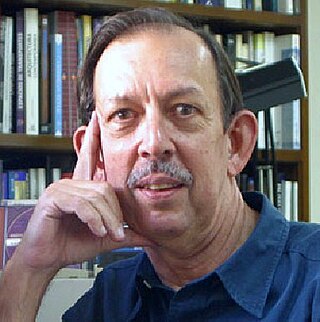
Pedro José Borrell Bentz is an internationally recognized Dominican architect and archeologist who has earned several awards and is recognized for the transcendence in his architectural designs.

The Islamic Society of Greater Houston (ISGH) is a system of mosques in Greater Houston. It is headquartered at the Eastside Main Center in Upper Kirby in Houston.

Frank Rafael Rainieri Marranzini is a Dominican businessman in tourism industry in the Dominican Republic. He is the chairman and founder of Grupo Puntacana. According to Forbes, Rainieri has one of the ten largest fortunes in the Dominican Republic, with a net worth near the billion-dollar mark as of 2014. In 2015, he was designated ambassador of the Sovereign Military Order of Malta to the Dominican Republic, a position that his father also held four decades earlier.

Tourism in the Dominican Republic is an important sector of the country's economy. More than 10 million tourists visited the Dominican Republic in 2023, making it the most popular tourist destination in the Caribbean and putting it in the top 5 overall in the Americas. The industry accounts for 11.6% of the nation's GDP and is a particularly important source of revenue in coastal areas of the country. The nation's tropical climate, white sand beaches, diverse mountainous landscape and colonial history attracts visitors from around the world. In 2022, the nation's tourism was named the best-performing nation post-pandemic with over 5% visitors more in comparison to pre-pandemic levels in 2019.
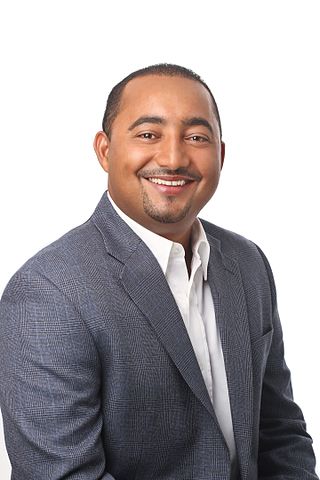
Ramón Antonio Ramírez (Manolito) is a Dominican politician and businessman. As of November 2016, he serves as district director of the Veron Municipal District.
The Al-Noor Mosque is a mosque in Santo Domingo, National District, Dominican Republic.

Cotubanamá National Park is located on the lower southeastern coast of the Dominican Republic, spanning across the provinces of La Altagracia and La Romana with an area of 791.9 sq. kilometers which includes a range of dense humid and dry subtropical forests, mangroves, beaches, and caves.
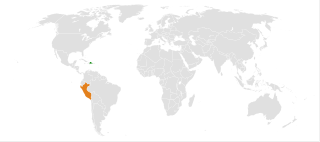
Dominican Republic–Peru relations are the bilateral relations between the Dominican Republic and Peru. Both countries are members of the Organization of American States and the United Nations, and embassies are maintained in both capital cities. Relations are described as friendly.

